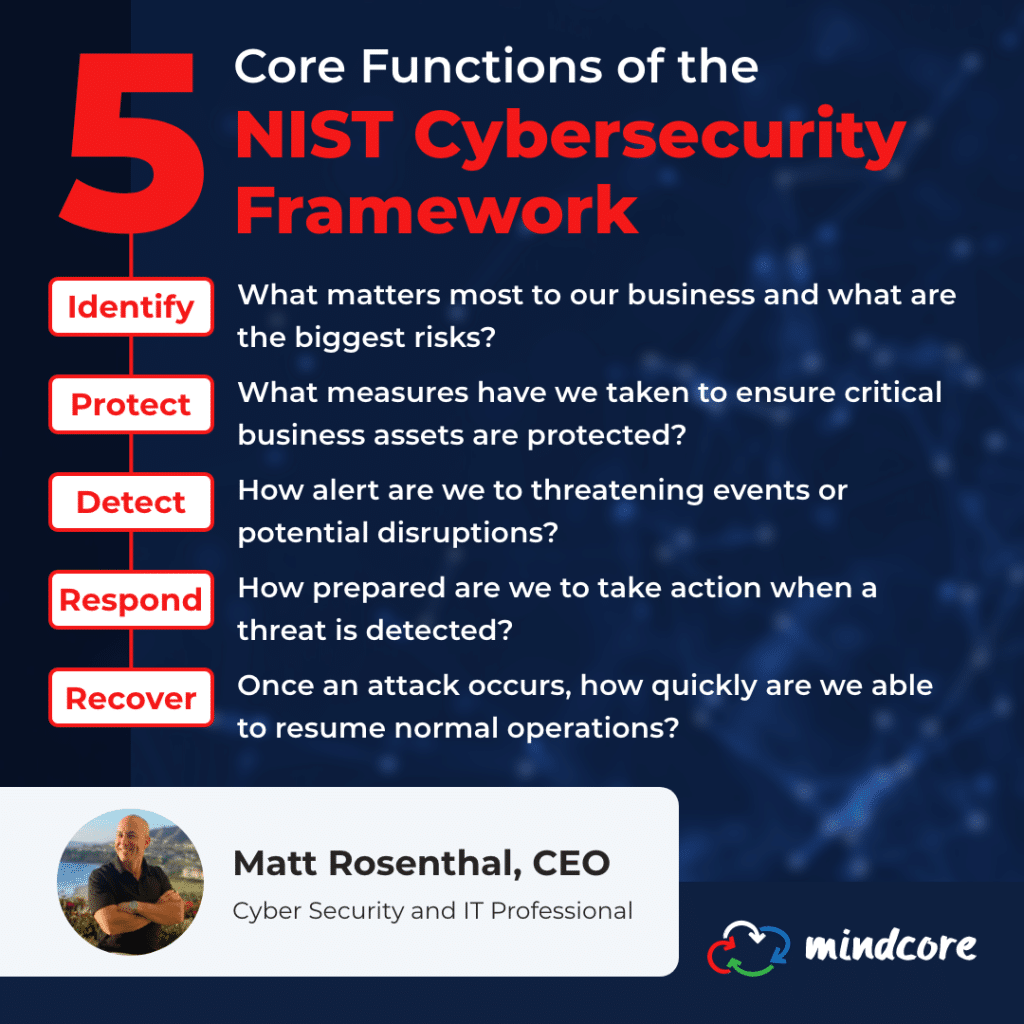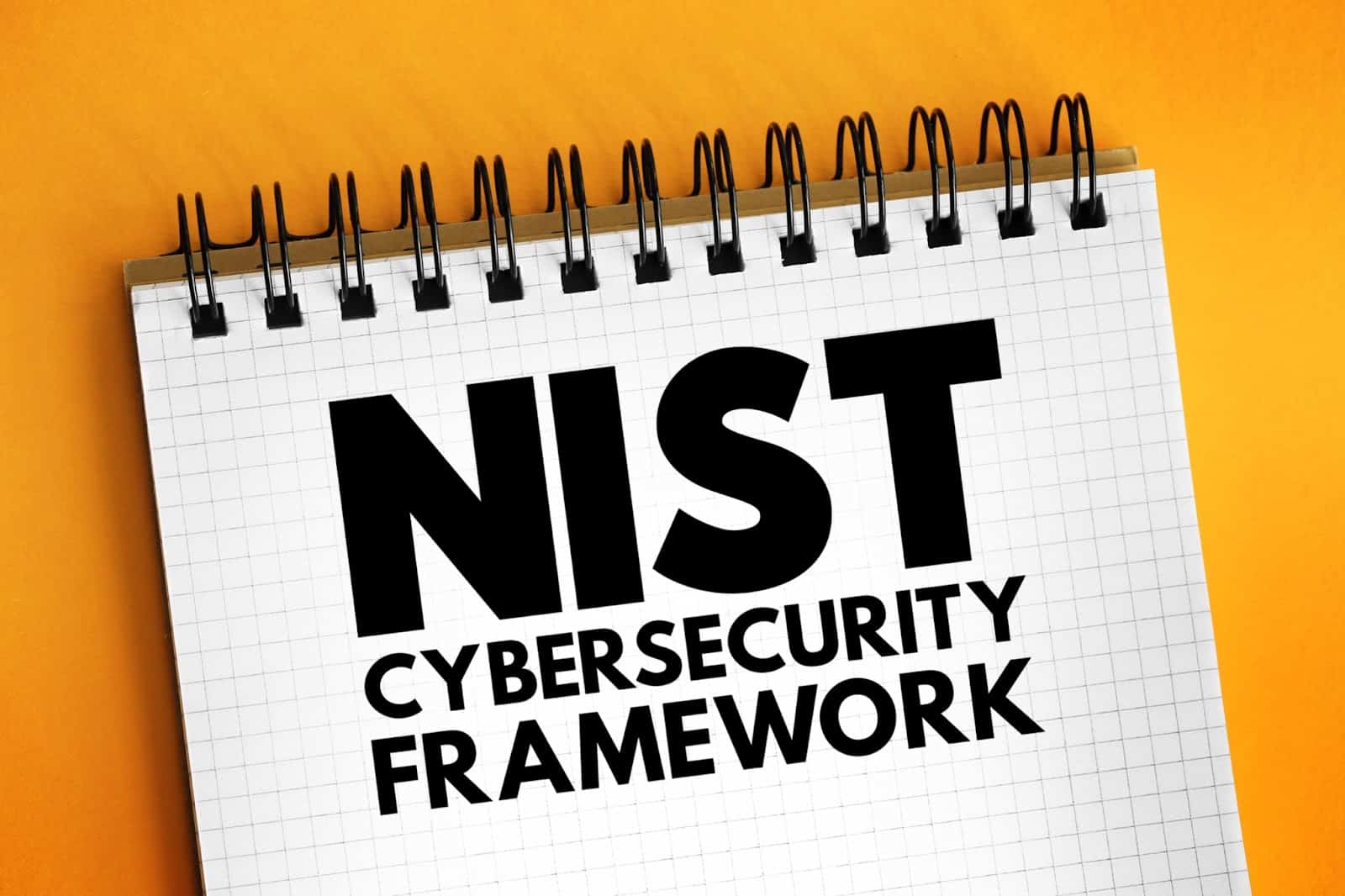
Cybercrime poses a significant threat to organizations, both in the U.S. and internationally. There were 1,862 breaches last year, up 68% from 2020 and surpassing the previous record of 1,506 in 2017. Business leaders have a fiduciary responsibility to protect their company’s assets, including sensitive data and information. Hiring skilled professionals who have a solid understanding of cyber security is a good first step.
However, more and more companies are turning toward proven tools and resources to increase their cyber security posture. One such tool, the NIST Cybersecurity Framework (commonly known as “CSF”), is a free resource developed and provided by the U.S. government. Learn more about the NIST CSF and what it’s used for below.
NIST Cybersecurity Framework Defined
The National Institute of Standards and Technology, or NIST, is a non-regulatory agency founded in 1901 and is now part of the U.S. Department of Commerce. The NIST CSF is a structured collection of cyber risk fundamentals that can be used to manage and improve a cyber security program. The agency describes the framework as such:
“The framework is voluntary guidance, based on existing standards, guidelines, and practices for organizations to better manage and reduce cybersecurity risk. In addition to helping organizations manage and reduce risks, it was designed to foster risk and cybersecurity management communications amongst both internal and external organizational stakeholders.”
While it is not mandatory, the NIST CSF is highly recommended since it’s based on well-researched information and best practices and is recognized as a national gold standard.
5 Core Functions of the NIST Cybersecurity Framework
At the highest level, the NIST CSF is organized into five functions, or key activities, that define a holistic approach to a company’s cyber risk management. These main functions include:
- Identify – What matters most to our business and what are the biggest risks?
- Protect – What measures have we taken to ensure critical business assets are protected?
- Detect – How alert are we to threatening events or potential disruptions?
- Respond – How prepared are we to take action when a threat is detected?
- Recover – Once an attack occurs, how quickly are we able to resume normal operations?
Each function contains related security activities to help organizations understand what steps need to be taken to achieve desired outcomes. Those activities are broken down into “categories” and “subcategories”, each providing a more detailed description of leading practices. When all functions are considered together, they offer a comprehensive view of the cyber security lifecycle over time.
Who Uses the NIST Cybersecurity Framework?
Although the framework was designed specifically for companies that are part of the U.S. critical infrastructure, many other private and public organizations — including federal agencies — are using it. Whether you’re in the beginning stages of developing a cyber security program or you’ve had one in place for years, the NIST CSF can be a helpful tool. The framework can be used in a variety of ways, depending on your business goals and objectives. Some examples include:
- Raising awareness and communicating across all levels of the organization, including executive leadership
- Sharing cyber security expectations with stakeholders, such as business partners, customers, and suppliers
- Reconciling internal policy with legislation, regulation, and industry best practices
- Assessing risks and current practices
How Often is the Framework Updated?
As cyber attacks continue to advance, the NIST Cybersecurity Framework does too. NIST says that the framework will be “refined, improved, and evolved over time to keep pace with technology and threat trends, integrate lessons learned, and establish best practice as common practice.”
Cybercriminals do not discriminate when it comes to an attack. It’s no longer a matter of if, but when a breach will happen. Businesses in every industry are at risk and need to take a proactive approach to their cyber security. If you’re looking to strengthen your IT infrastructure, the NIST CSF is the right solution for you.
Top Cyber Security Consultants in NJ & FL
Mindcore is your trusted partner for cyber security services in New Jersey, Florida, and throughout the United States. We can help you implement the NIST Cybersecurity Framework and customize it to your unique business needs. Contact us for more information or schedule a consultation with a member of our team today!

